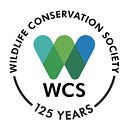WCS 3-Sentence Science
Do Belize’s Jaguar Corridors Work?
December 26, 2019
Each year, Wildlife Conservation Society scientists publish more than 300 peer-reviewed studies and papers. “WCS 3-Sentence Science” is a regular tip-sheet — in bite sized helpings — of some of this published work.
Here we present work by the WCS’s Natalia Rossi on the importance of maintaining wildlife corridors for jaguars to ensure healthy gene flow.
- Connectivity among jaguar (Panthera onca) populations will ensure natural gene flow and the long-term survival of the species throughout its range.
- Researchers used non-invasive genetic sampling and analyses to assess diversity and levels of genetic connectivity between 50 individuals in the Cockscomb Basin Wildlife Sanctuary and the Maya Forest Corridor in Belize.
- They found high levels of relatively recent gene flow for jaguars between two study sites in central Belize, which highlights the importance of maintaining already established corridors and consolidating new areas that further promote jaguar movement across suitable habitat beyond the boundaries of currently protected areas.
Study and Journal: “Population genetic structure and habitat connectivity for jaguar (Panthera onca) conservation in Central Belize” from BMC Genetics
WCS Co-Author(s): Natalia Rossi, WCS Latin America and Caribbean Program
For more information, contact: Stephen Sautner, 718–220–3682, ssautner@wcs.org.
